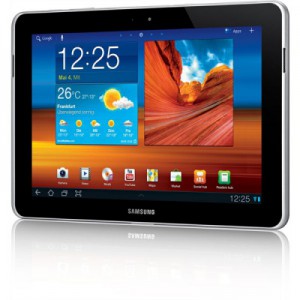サムスンの特許権(東京地裁及び知財高裁)―標準化技術の特許問題―
標準特許4642898(3GPP世代のUMTS規格として推進されているW-CDMA技術に関する送受信方法及び装置)
2011(H23)年 4月21日 東京地裁へサムスンが特許4642898に基づきアップル製品の仮処分申請
9月16日 アップルは、自社製品に関してサムスンの標準特許4642898号の損害賠償をする必要が無い事を確認する訴訟を提起(債務不存在確認訴訟)
2013(H25)年 6月21日 東京地裁(特許権仮処分命令申立) 特許4642898号に基づくiPhone4及びiPad2Wi-Fi+3G(平成23(ヨ)22027の係争品)並びにiPhone4S(平成23(ヨ)22098の係争品)の差し止め請求権の行使は権利濫用に当たる(大鷹一郎裁判長)。
6月21日 東京地裁46部判決(平成23(ワ)38969 (債務不存在確認請求)大鷹一郎裁判長)iPhone 4及びiPad2Wi-Fi+3Gは特許4642898号の範囲内(侵害認定) で、本件特許に無効事由は無い。しかし、サムソンの実施権契約の交渉態度はFRAND宣言をした者として信義誠実に反するので、損害賠償請求権の行使は権利の濫用として許されない。
2014(H26)年 1月23日 大合議事件に指定され、3月24日までパブリックコメントを募集
5月16日 知財高裁大合議(平成25年(ラ)第10007及び(ラ)10008(特許権仮処分命令申立却下決定に対する抗告申立)飯村敏明裁判長)iPhone 4及びiPad2Wi-Fi+3Gは本件特許権の技術的範囲内で、本件特許に無効事由は無い。しかし本件特許権の差止請求権の行使は権利濫用に当たる。
5月16日 知財高裁大合議(平成25(ネ)10043(債務不存在確認請求の控訴)飯村敏明裁判長)iPhone 4及びiPad2Wi-Fi+3Gに対する損害賠償請求は,FRAND条件でのライセンス料相当額を越える部分では権利の濫用であるが、上記ライセンス料相当額の範囲内では権利の濫用に当たらない。サムスンのアップルに対する実施料相当額の損害賠償請求権(約995万円及び遅延損害金)を認める。
解説(標準化技術の特許問題):
情報通信のため共通規格化やコスト削減のための部品共通化(モジュール化)等のために標準化(共通規格)は必須となっています。そこで、通信業界等では標準化団体が結成され、規格化するべき標準技術を決定し、その団体の構成員が、自己の保有する必須特許を、技術の実施を希望する他人に妥当な条件でライセンスするためのFRAND(Fair, Reasonable And Non-Discriminatory正当かつ合理的で非差別的)宣言を行い、業界全体として標準化技術の規格を利用してゆく制度が採用されています。
このような標準技術は業界全体で利用する規格であり、代替的手段がないのが通常です。そのため、法律で認められているとはいえ、必須特許の行使には一定の制限があってもよいのではないか、との考えがでてきます。必須特許を有する者がFRAND宣言を守らない場合に、差し止め請求権を制限なしに認めると、競業者が標準規格である技術を利用できなくなり不当な独占を認める可能性がでてくるからです。標準化技術の特許では、一定の条件下で差し止め請求権を制限しつつ、損害賠償請求権は認めることが、特許権者と公衆の権利のバランスを保つには適切であると思われます。なお、標準化技術の特許問題ではありませんが、米国最高裁には、一定の条件を付けて、差し止め請求権を認めず、損害賠償請求権のみを認めた例があります (eBay Inc. v. Merc Exchange, L.L.C., 547 U.S. 388 (2006))。
解説(本件特許に基づく差し止め請求権):
サムスンの特許(4642898号)は、3GPP(音声、データ及びマルチメディアサービスを提供するための、世界的に運用互換性のある、第3世代(3G)移動通信システムプロジェクト)規格として推進されているW-CDMA(UMTS)技術に必須のものです。
1998年(平成10年)に、3GPPの普及促進と付随する仕様の標準化を目的としてETSI等が標準化団体を結成し、FRAND宣言もなされていますので、UMTS規格に準拠した製品を製造販売する者は、特許権者と適切に交渉すればFRAND条件によるライセンスを受けられると期待しています。FRAND宣言した特許権者に、無制限に差し止め請求権の行使を許容することは、そのような期待を裏切り、事業に重大な損害を与えることになります。そもそも、必須宣言特許の権利者は、特許権が全世界的に利用されるため、規格に採用されなければ得られなかったであろうライセンス料収入が得られるはずです。それにFRAND宣言とは、適正なライセンス料を得ることと引き替えに差止請求権を行使しない宣言ですので、差止請求権の行使を認める必要はあまりありません。
本件では、サムスンはFRAND宣言をしており、アップルはFRAND条件によるライセンスを受ける意思を示していると認められますので、知財高裁では地裁決定を維持し、差し止め請求権の行使(仮処分)を認めませんでした。なお、判決を導く構成において、地裁と知財高裁では少し異なっており、知財高裁のほうが納まりがよいと思われます。
解説(本件特許に基づく損害賠償請求権):
知財高裁では、FRAND条件によるライセンス料相当額は,原則的には、iPhone 4及びiPad2Wi-Fi+3Gの売上高に、(i)製品がUMTS規格に準拠していることが売上げに寄与したと認められる割合(寄与率)を乗じ、(ii)さらに累積ロイヤリティの上限となる率を乗じ、(iii)UMTS規格の必須特許の数で除することで算出された額となると判断しました(判決文137-148頁)。
上記(i)UMTS規格に準拠している貢献部分(寄与率)の認定では、対象製品は移動体通信機能としてW-CDMA方式以外にGSM方式等にも準拠しており、Wi-Fi等の無線通信機能も有すること、売上高合計にはそのデザインや機能が貢献しており、アップルのブランド力やマーケティング活動も相当程度貢献していること、売上高にはメモリ容量の大小が貢献していること、iPhone4は移動体通信機能を主とする一方、iPad2には3G機能の無いiPad2 Wi-fiも販売されていることから移動体通信機がその売上げに寄与した割合はiPhone4よりも小さいこと、を判断しています。
また、(ii)累積ロイヤリティの上限は、W-CDMAパテントプラットフォームでは基準料率を工場出荷額の5パーセント(双方当事者の主張も同じ)であることを考慮しています。
更に、(iii) UMTS規格の他の必須特許との関係については、本件各発明の効果が限定的な場合に限られるので規格に対する技術的貢献度で特別扱いする必要は無く、必須特許の個数割りでよいこと、UMTS規格に必須となる特許を分析したものであり、当事者双方も認めているフェアフィールド社レポートによると、必須宣言された1889の特許ファミリー中、必須であるかおそらく必須である(mandatory)と判定されたのは529の特許ファミリーであったこと、を考慮した結果、ライセンス料を算定しています。
RAND宣言された標準特許のライセンス料の算定に関してのこのように詳細な判断は世界的に意味のあるもので、他には米国ワシントン州西部地区連邦地裁James L. Robart判事による(算定基準の提案ともいえる)決定(Microsoft Corp.v.Motorola,Inc.,C10-1823,April 25,2013)がある程度です。
なお、地裁判決は、サムスンの特許権の侵害は認定する一方、侵害により発生した損害に対して賠償請求権を認めないものでしたので、議論が生じていました。
Continue reading

